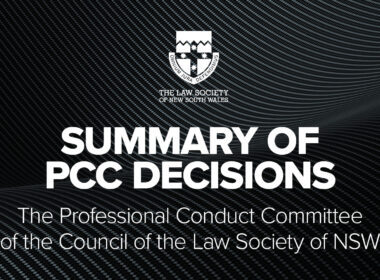Here is a walk-through of how generative AI may be used to assist you to provide legal services, and the regulatory and ethical considerations that may present itself.
Step: Confirmatory communications
Considerations in using generative AI: Generative AI can generate conversational responses to queries. It can therefore be helpful for more common writing tasks. Consider whether your client should know you plan to use generative AI for their advice, and also consider whether having access to such a system has a cyber-risk element.
Step: Initial legal research
Considerations in using generative AI: As a preliminary research tool, generative AI may help to give a broad picture, so long as users are:
- very careful not to disclose any confidential information to it.
- aware of its limitations. Generative AI should not be blindly relied upon, even at this preliminary stage, noting it has been known to fabricate case references.
- careful not to rely on it to move into areas of law where the user does not have sufficient expertise.
Step: Obtaining further particulars from our client
Considerations in using generative AI: Using generative AI for this step is not a complete solution, as it cannot read humans like humans can. However, generative AI tools can offer a more personalised and tailored experience, by seeking further particulars in a more interactive way than simply filling in an online form.
Step: In-depth legal research
Considerations in using generative AI: Caution must be exercised. Refer to the Law Society’s AI guidelines regarding how generative AI works and the impact it has on the responses it may generate when conducting legal research. Issues requiring considerations include:
- Confidentiality (an applicable consideration at every step).
- The source/s of the generative AI’s information (noting that, at least for public generative IT, it would likely be impossible to trace.
- Bias inherent in generative AI. Such bias can affect the response generated in many ways, and produce information that is:
- Inaccurate
- out of date
- geographically limited
- culturally limited, or
- not sufficiently specific to legal issues
- Consideration should also be given to whether there could be a breach of legal rights given you do not know the source of the information, for example, are you breaching:
- intellectual property rights
- privacy considerations
- human rights
- rights to procedural fairness
Step: Analysing legal research
Considerations in using generative AI: Practitioners are responsible for the accuracy of the advice they give. That responsibility extends to (both) client/s and to the administration of justice. Practitioners must therefore check/analyse any research generated by AI, just as you would any other information provided by another.
Step: Crafting the advice
Considerations in using generative AI: Generative AI may help with setting out a basic framework within which to communicate any carefully crafted advice that you have prepared. It can also help with providing the contra argument – again using its ability to generate words from patterns.
Step: Draft article or presentation
Considerations in using generative AI: Generative AI can be very good at pulling together research notes into a coherent form and translating them to slides. Again, though, practitioners must be very careful to ensure accuracy and confidentiality.
Step: Supervision
Considerations in using generative AI: Generative AI is probably best compared to a paralegal or an administrative assistant, depending on the tasks it assists with. Practitioners will need to ensure they supervise the work it produces, thoroughly review it and make any necessary changes and/or amendments, depending on the particular circumstances.




